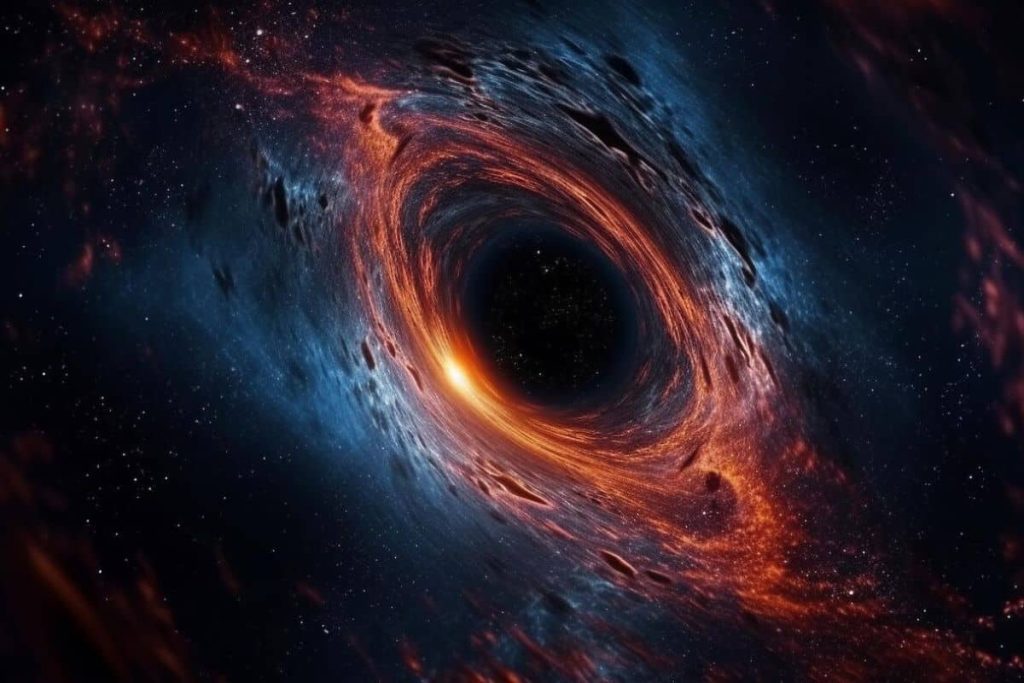Scientists May Have Discovered 300 of the Rarest Black Holes in the Universe – The Daily Galaxy –Great Discoveries Channel

Astronomers have uncovered 300 of the rarest black holes ever found, potentially solving a long-standing cosmic mystery. Could these elusive objects be the missing link in black hole evolution? Scientists are now piecing together the clues—what they’ve found so far is changing everything we thought we kneAstronomers have identified 300 ultra-rare black holes, potentially solving one of the biggest mysteries in astrophysics—how supermassive black holes form and evolve. Using the Dark Energy Spectroscopic Instrument (DESI), researchers scanned 410,000 galaxies and found the largest collection of intermediate-mass black hole candidates ever recorded. The findings, published in the Astrophysical Journal, could offer new insights into how black holes grow and shape galaxies.For decades, scientists have struggled to explain how black holes grow from relatively small objects into supermassive behemoths that can be billions of times more massive than the Sun. Most known black holes fall into two categories. Stellar-mass black holes (a few to a few dozen times the mass of the Sun) and supermassive black holes (millions to billions of solar masses)However, there has been little observational evidence of intermediate-mass black holes (IMBHs), which range from 100 to 100,000 solar masses. These objects could be the missing evolutionary step between the smallest and largest black holes. While astronomers have spotted some promising candidates, none have been definitively confirmed—until now.The breakthrough came from the Dark Energy Spectroscopic Instrument (DESI), mounted on the Nicholas U. Mayall 4-meter Telescope in Arizona. DESI was designed to study the expansion of the universe by mapping millions of galaxies, but its data proved invaluable for hunting black holes as well.By analyzing light from galaxies, scientists identified more than 2,500 dwarf galaxies with active galactic nuclei (AGN)—bright emissions caused by matter falling into a black hole. Among these, 300 black hole candidates fell into the elusive IMBH category. This tripled the number of known intermediate-mass black hole candidates, making it the largest dataset of its kind.When a black hole actively feeds on surrounding material, it releases a powerful burst of energy, creating what is known as an active galactic nucleus (AGN). These bright emissions serve as a beacon, allowing astronomers to detect otherwise hidden black holes.Lead researcher Ragadeepika Pucha from the University of Utah emphasized how AGNs were key to identifying the missing IMBHs. “When a black hole at the center of a galaxy starts feeding, it unleashes a tremendous amount of energy into its surroundings, transforming into what we call an active galactic nucleus,” Pucha explained in a statement. “This dramatic activity serves as a beacon, allowing us to identify hidden black holes in these small galaxies.”While the discovery of 300 IMBH candidates is groundbreaking, the data also raised new questions. IMBHs were expected to be common in dwarf galaxies, but only 70 of the newly found intermediate black holes were also found in dwarf galaxies. This unexpected result challenges previous assumptions and suggests that IMBHs may be forming in different environments than previously thought.The discovery also hints at multiple pathways for black hole formation. Scientists previously believed that supermassive black holes grew from merging smaller black holes over billions of years. However, the new findings suggest that other processes—perhaps direct collapse of massive gas clouds—may also play a role in creating these cosmic giants.Black holes play a crucial role in shaping galaxies. Their immense gravity influences the movement of stars and gas, and their powerful energy output can regulate star formation by heating surrounding material. The presence of IMBHs in unexpected locations suggests that they may have a more complex relationship with galaxy evolution than previously understood.Astronomers are now eager to investigate whether these newfound IMBHs follow a predictable growth pattern or if their formation depends on environmental factors.The discovery of 300 intermediate-mass black holes is a game-changer in astrophysics. These rare objects could hold the key to understanding how supermassive black holes form and evolve. As DESI continues its mission, astronomers anticipate even more insights into the mysterious world of black holes.Comment Save my name, email, and website in this browser for the next time I comment.
© 2024 | Daily Galaxy | All rights reserved
Source: https://dailygalaxy.com/2025/02/scientists-discovered-300-rarest-black-holes/






